Abstract
We studied 15-aza-24-methylene-8,14-cholestadiene-3 beta-ol (15-azasterol) inhibition of Saccharomyces cerevisiae growth. Exposure to sublethal concentrations of this drug caused S. cerevisiae cells to undergo a transient period of inhibition at midlog phase. During growth inhibition the turbidity of each culture remained constant, as did the total cell number. Although the proportion of viable cells in cultures decreased from 90 to 12% during inhibition, methylene blue staining showed that less than 40% of the cells underwent metabolic inactivation. We monitored adenosine triphosphate levels throughout the inhibition cycle, and these levels followed kinetics identical to cell growth kinetics. After overcoming inhibition, cellular lipid extracts revealed the presence of a modified form of 15-azasterol. It appeared that the yeast cells were able to overcome 15-azasterol inhibition by an inactivating transmethylation reaction involving S-adenosylmethionine.
Full text
PDF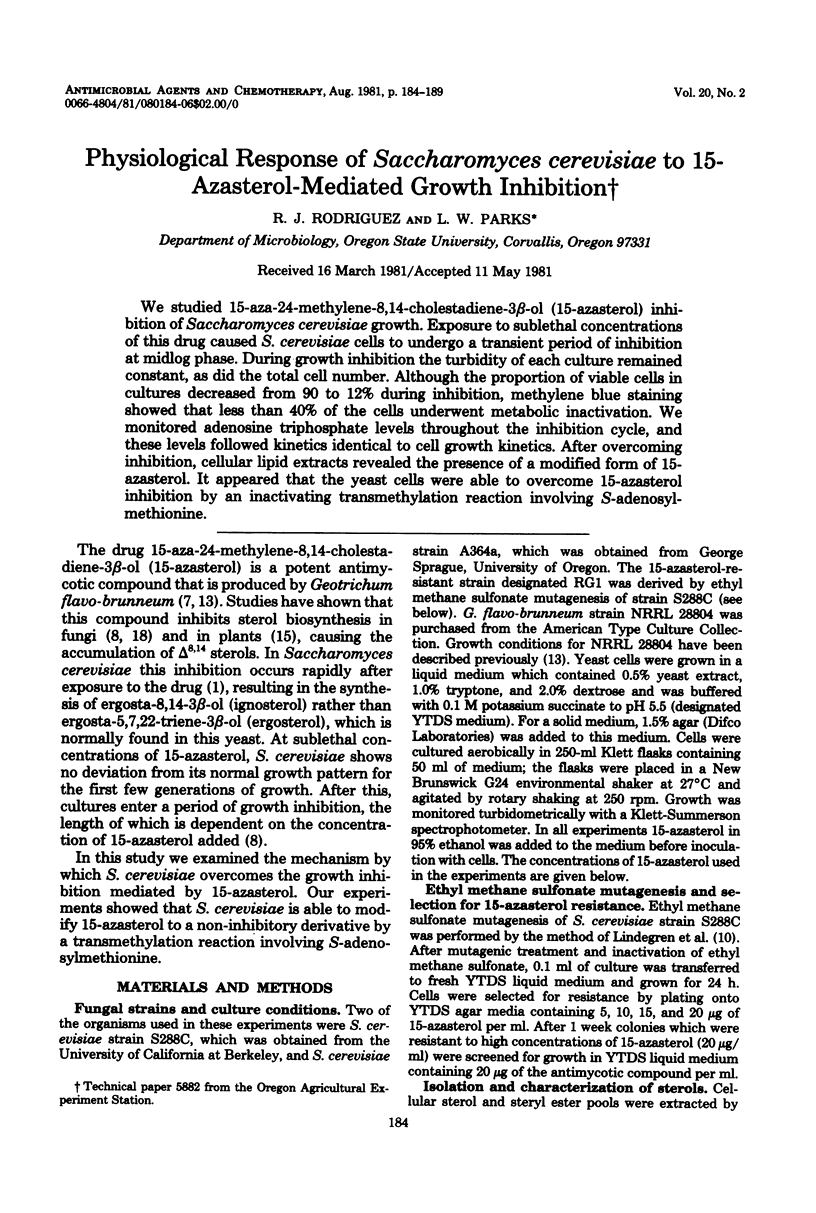
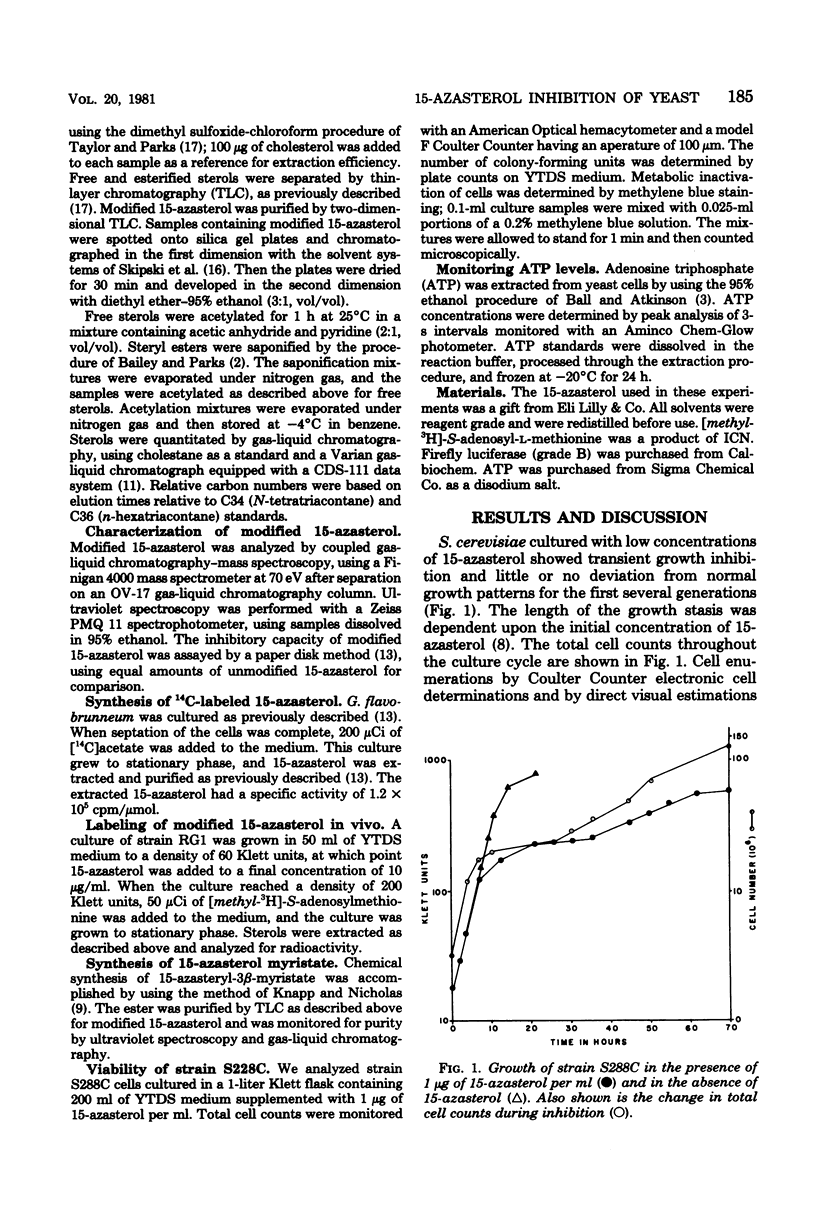
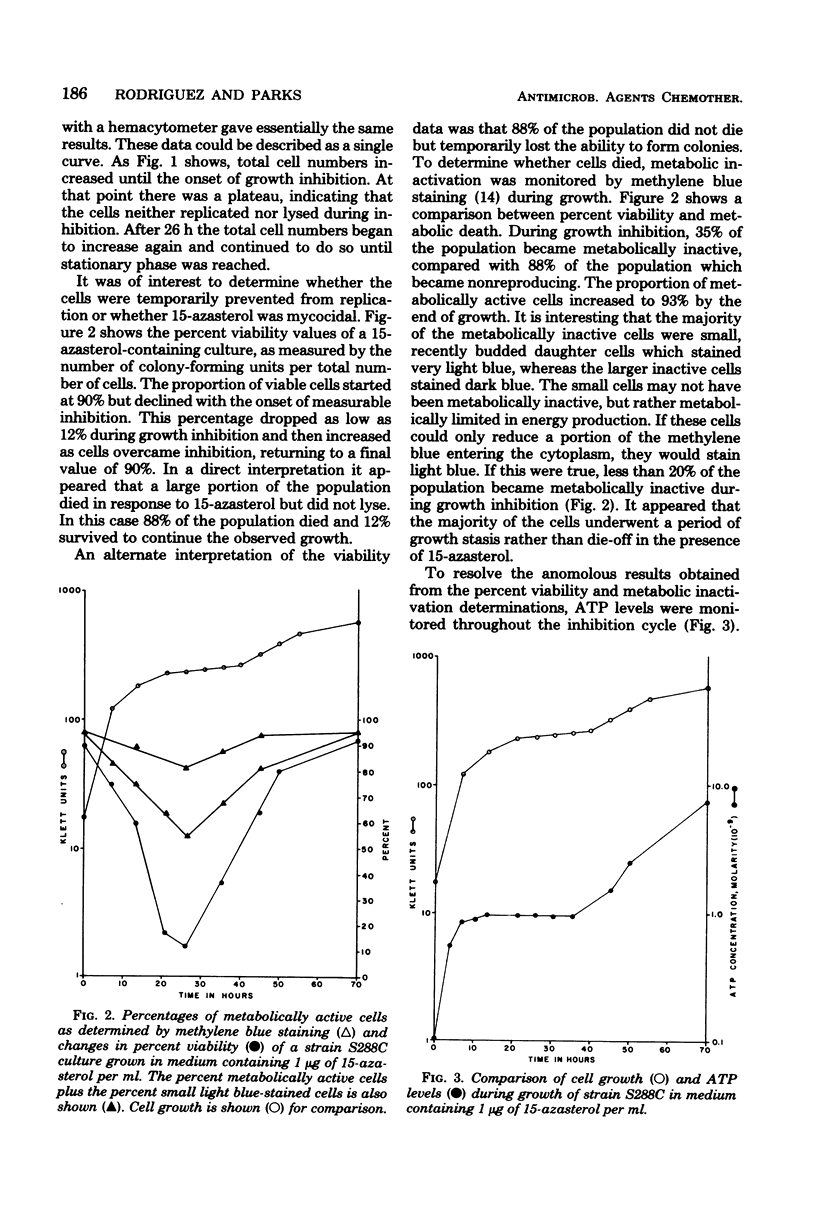
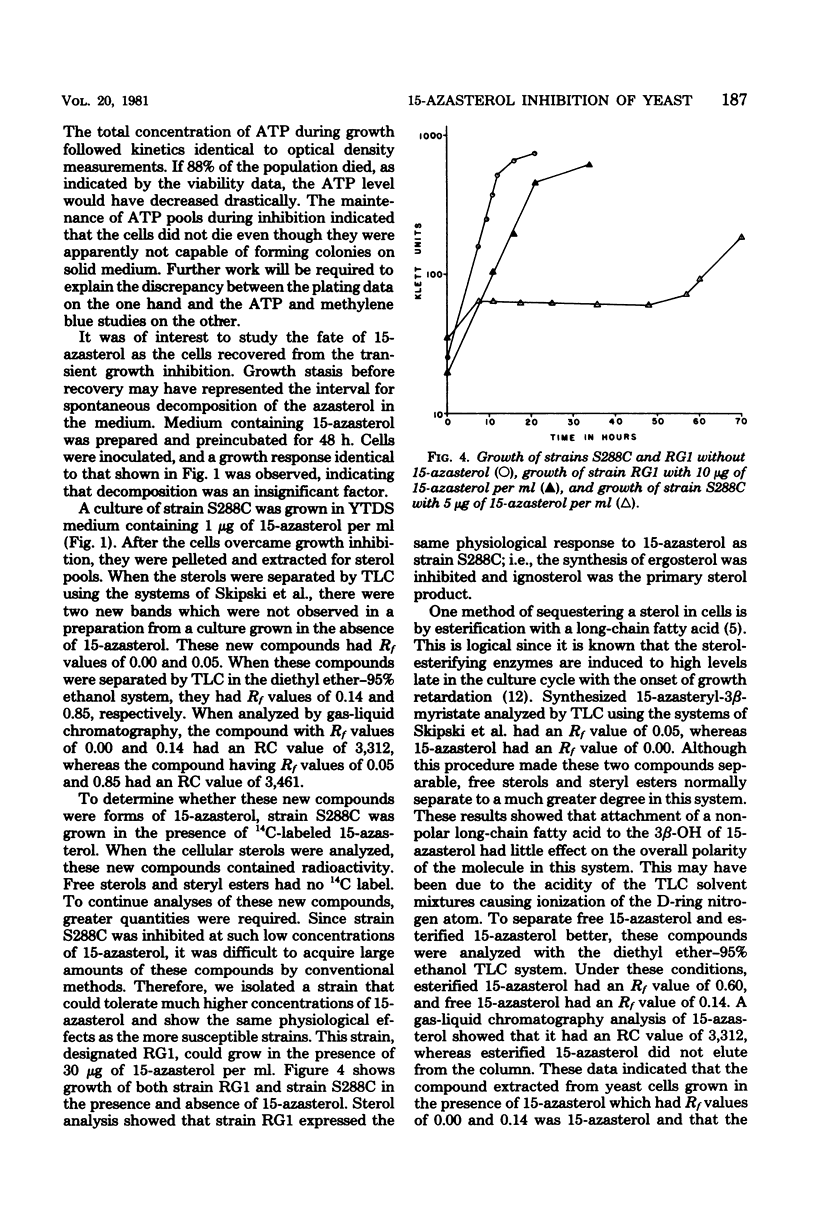
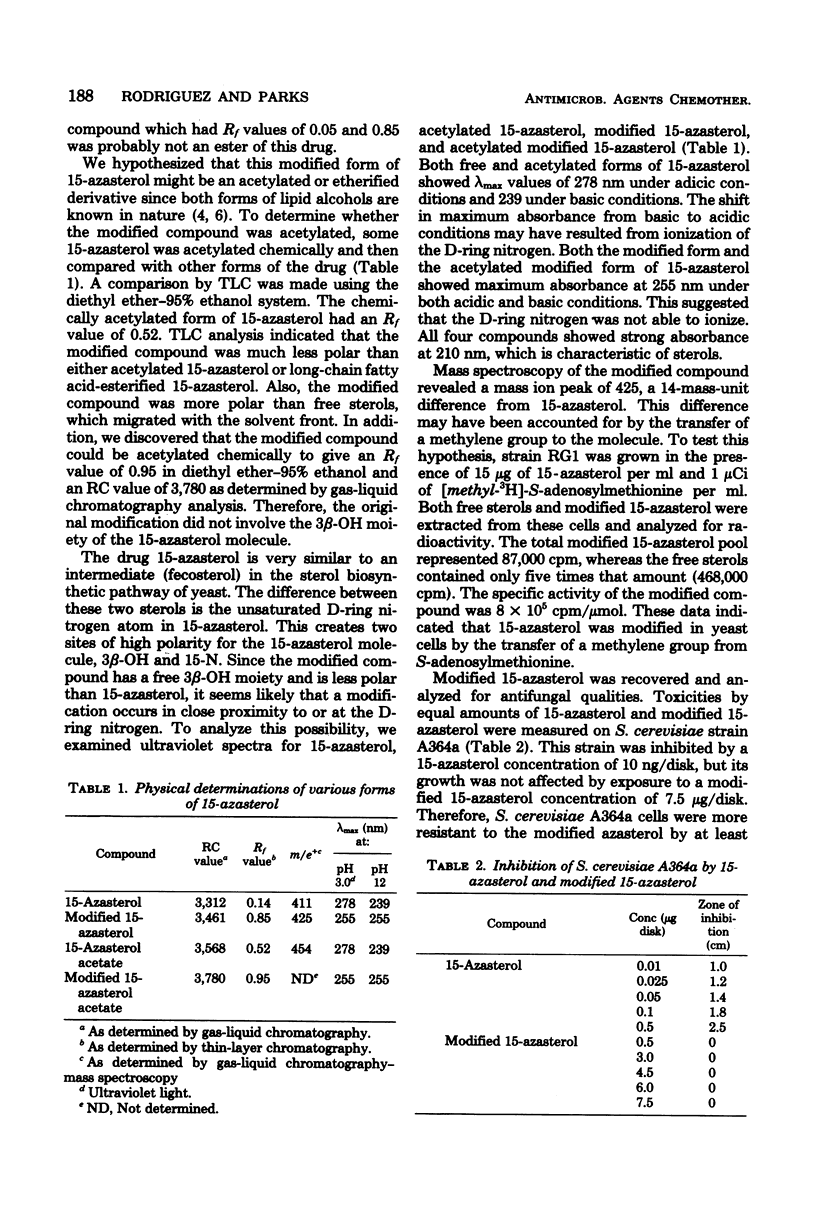
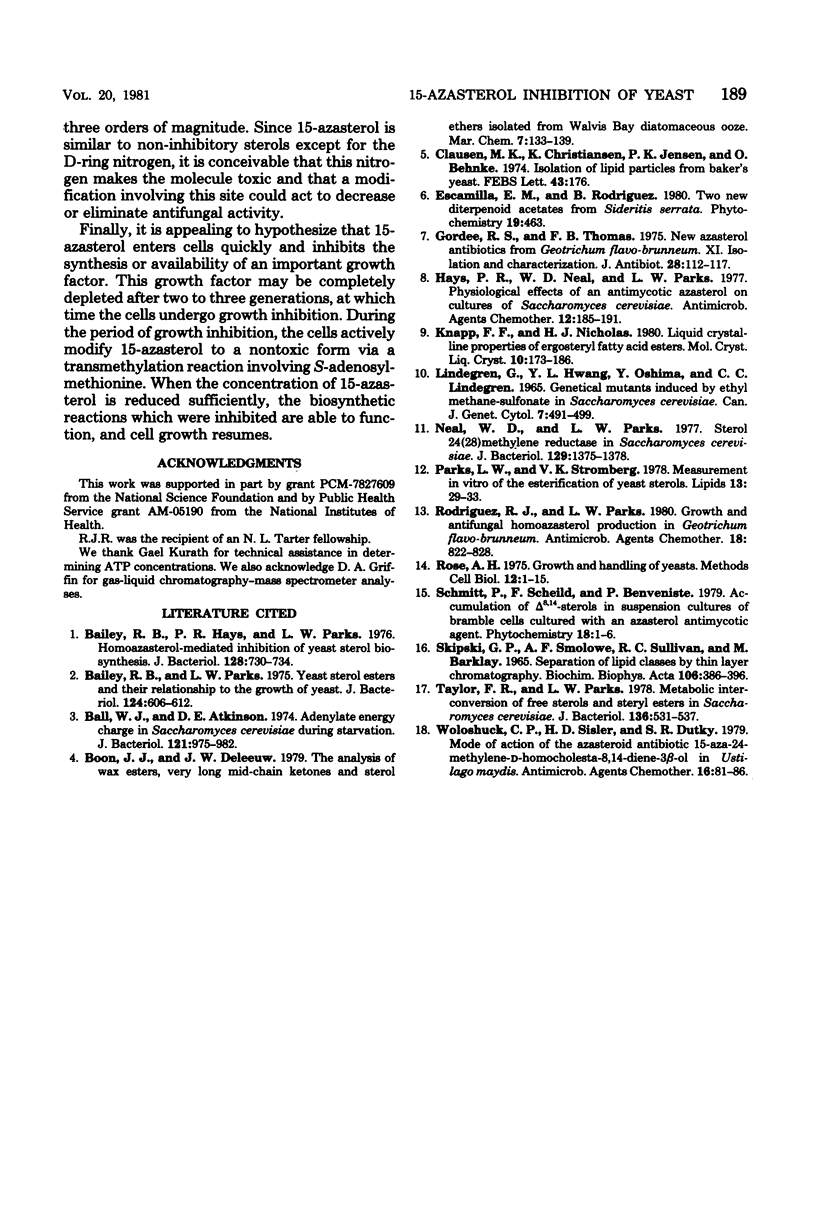
Selected References
These references are in PubMed. This may not be the complete list of references from this article.
- Bailey R. B., Hays P. R., Parks L. W. Homoazasterol-mediated inhibition of yeast sterol biosynthesis. J Bacteriol. 1976 Dec;128(3):730–734. doi: 10.1128/jb.128.3.730-734.1976. [DOI] [PMC free article] [PubMed] [Google Scholar]
- Bailey R. B., Parks L. W. Yeast sterol esters and their relationship to the growth of yeast. J Bacteriol. 1975 Nov;124(2):606–612. doi: 10.1128/jb.124.2.606-612.1975. [DOI] [PMC free article] [PubMed] [Google Scholar]
- Ball W. J., Jr, Atkinson D. E. Adenylate energy charge in Saccharomyces cerevisiae during starvation. J Bacteriol. 1975 Mar;121(3):975–982. doi: 10.1128/jb.121.3.975-982.1975. [DOI] [PMC free article] [PubMed] [Google Scholar]
- Clausen M. K., Christiansen K., Jensen P. K., Behnke O. Isolation of lipid particles from baker's yeast. FEBS Lett. 1974 Jul 15;43(2):176–179. doi: 10.1016/0014-5793(74)80994-4. [DOI] [PubMed] [Google Scholar]
- Gordee R. S., Butler T. F. New azasteroidal antifungal antibiotics from Geotrichum flavo-brunneum. III. Biological activity. J Antibiot (Tokyo) 1975 Feb;28(2):112–117. doi: 10.7164/antibiotics.28.112. [DOI] [PubMed] [Google Scholar]
- Hays P. R., Neal W. D., Parks L. W. Physiological effects of an antimycotic azasterol on cultures of Saccharomyces cerevisiae. Antimicrob Agents Chemother. 1977 Aug;12(2):185–191. doi: 10.1128/aac.12.2.185. [DOI] [PMC free article] [PubMed] [Google Scholar]
- Lindegren G., Hwang Y. L., Oshima Y., Lindegren C. C. Genetical mutants induced by ethyl methanesulfonate in Saccharomyces. Can J Genet Cytol. 1965 Sep;7(3):491–499. doi: 10.1139/g65-064. [DOI] [PubMed] [Google Scholar]
- Neal W. D., Parks L. W. Sterol 24(28) methylene reductase in Saccharomyces cerevisiae. J Bacteriol. 1977 Mar;129(3):1375–1378. doi: 10.1128/jb.129.3.1375-1378.1977. [DOI] [PMC free article] [PubMed] [Google Scholar]
- Rodriguez R. J., Parks L. W. Growth and antifungal homoazasterol production in Geotrichum flavo-brunneum. Antimicrob Agents Chemother. 1980 Nov;18(5):822–828. doi: 10.1128/aac.18.5.822. [DOI] [PMC free article] [PubMed] [Google Scholar]
- Rose A. H. Growth and handling of yeasts. Methods Cell Biol. 1975;12:1–16. doi: 10.1016/s0091-679x(08)60948-6. [DOI] [PubMed] [Google Scholar]
- Skipski V. P., Smolowe A. F., Sullivan R. C., Barclay M. Separation of lipid classes by thin-layer chromatography. Biochim Biophys Acta. 1965 Oct 4;106(2):386–396. doi: 10.1016/0005-2760(65)90047-0. [DOI] [PubMed] [Google Scholar]
- Taylor F. R., Parks L. W. Metabolic interconversion of free sterols and steryl esters in Saccharomyces cerevisiae. J Bacteriol. 1978 Nov;136(2):531–537. doi: 10.1128/jb.136.2.531-537.1978. [DOI] [PMC free article] [PubMed] [Google Scholar]
- Woloshuk C. P., Sisler H. D., Dutky S. R. Mode of action of the azasteroid antibiotic 15-aza-24 methylene-d-homocholesta-8,14-dien-3 beta-ol in Ustilago maydis. Antimicrob Agents Chemother. 1979 Jul;16(1):81–97. doi: 10.1128/aac.16.1.81. [DOI] [PMC free article] [PubMed] [Google Scholar]


